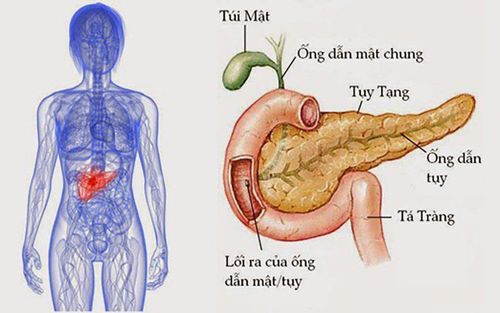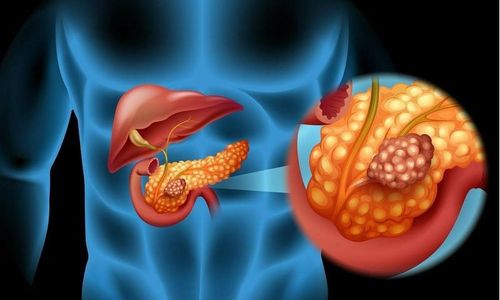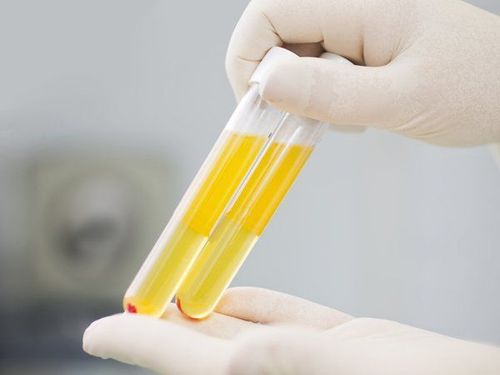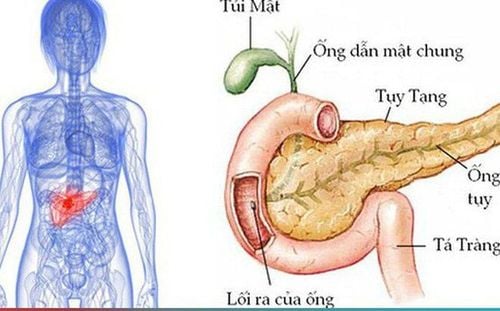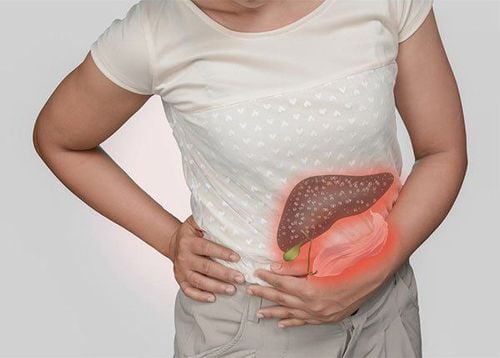This is an automatically translated article.
The article is written by Master, Doctor Mai Vien Phuong - Gastroenterologist - Department of Medical Examination & Internal Medicine - Vinmec Central Park International General Hospital.
Th2 cells, Tregs cells, Tfh cells and CD4 + CTLs cells were detected in the peripheral blood of patients with autoimmune pancreatitis or IgG4-RD and markedly decreased after remission. This raises the possibility that serum levels of effector T cells-derived immune cytokines could be useful biomarkers.
1. Complementary immune cytokines as biomarkers in autoimmune pancreatitis and IgG4-RD
Effector CD4 + T cell subpopulations, including Th2 cells, Tregs, TFH cells, CD4 + CTL, are all involved in the disease immunity of autoimmune pancreatitis and IgG4-RD, as shown by localization of T cells in the affected organ. Th2 cells, Tregs cells, Tfh cells, and CD4+ CTLs cells were detected in the peripheral blood of patients with autoimmune pancreatitis or IgG4-RD and markedly decreased after remission. This raises the possibility that serum levels of effector T cells-derived immune cytokines could be useful biomarkers.
Yamamoto et al found that serum levels of IL-5 were increased in patients with IgG4-RD, while serum levels of IL-10, IL-13, IL-21 and TGF-β1 were comparable. in healthy patients and controls. Since the primary cellular source of IL-5 is Th2 cells, these data support the idea that the activated state of Th2 cells could be a surrogate marker for IgG4-RD and autoimmune pancreatitis. Consistent with this view, bile concentrations of Th2 cytokines such as IL-4, IL-5, and IL-13 were significantly higher in patients with IgG4-associated sclerosing cholangitis than in patients with primary sclerosing cholangitis. Mechanistically, these Th2 cytokines induce bile leakage due to impairment of the tightly bound biliary epithelial cell barrier, thereby inducing chronic cholangitis. Furthermore, two cases of IgG4-RD that were successfully treated with Dupilumab which inactivated the IL-4α receptor were reported. Thus, Th2 responses may underlie the immunogenicity of autoimmune pancreatitis and IgG4-RD. Th2 cytokines, especially IL-5, can be used as biomarkers of autoimmune pancreatitis and IgG4-RD.
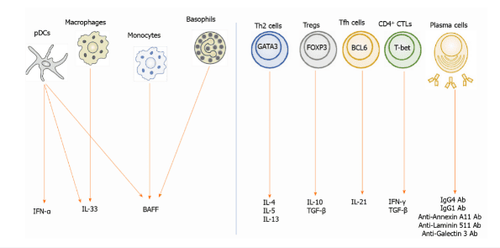
2. Correlation between serum IgG4 Ab and circulating Tfh cell count
A positive correlation between serum IgG4 Ab levels and circulating Tfh cell counts has been demonstrated in patients with IgG4-RD. However, the utility of serum levels of IL-21, a prototypical cytokine produced by Tfh cells, for the diagnosis of IgG4-RD has not been verified. Similarly, the usefulness of serum levels of IFN-γ and TGF-β1 induced by CD4 + CTLs as biomarkers of autoimmune pancreatitis and IgG4-RD were also not reported. Therefore, at present, the use of adaptive immune cytokines as biomarkers for autoimmune pancreatitis and IgG4-RD is limited.
The reason why previous studies have not successfully identified adaptive immune cytokines as biomarkers can be partly explained by the organs affected in autoimmune pancreatitis and IgG4-RD or by complex effector T cell responses. Thus, classifying IgG4-RD into subtypes according to affected organ distribution may lead to the identification of specific biomarkers for each such classifier.
3. Initiating immune cytokines as biomarkers in autoimmune pancreatitis and IgG4-RD
Activation of pDCs and robust production of IFN-α and IL-33, followed by characteristic pathogenic immune responses in experimental autoimmune pancreatitis and human IgG4-RD. These findings helped the authors to test whether serum levels of IFN-α and IL-33 could be useful biomarkers for autoimmune pancreatitis as well as IgG4-RD. For this purpose, the authors measured serum levels of these cytokines in patients with autoimmune pancreatitis and IgG4-RD who met well-established diagnostic criteria. Compared with patients with chronic alcoholic pancreatitis and healthy controls, patients with autoimmune pancreatitis and IgG4-RD had markedly increased serum levels of IFN-α and IL-33. In contrast, serum levels of the proto-inflammatory cytokines IL-1β and IL-6 were comparable in patients with autoimmune pancreatitis/IgG4-RD and those with chronic alcoholic pancreatitis. . Serum concentrations of IFN-α and IL-33 are positively correlated with concentrations of IgG4 Ab. Therefore, measurements of serum levels of IFN-α and IL-33 can be very useful for the diagnosis of autoimmune pancreatitis and IgG4-RD.
4. Serum IFN-α and IL-33 levels as novel biomarkers in autoimmune pancreatitis and IgG4-RD
The authors evaluated the diagnostic effect of serum IFN-α and IL-33 levels on autoimmune pancreatitis and IgG4-RD. Surprisingly, the diagnostic performance of serum levels of IFN-α and IL-33 as diagnostic markers for autoimmune pancreatitis and IgG4-RD was comparable to that of serum IgG4 Ab, as calculated calculated by analyzing the receiver operating characteristic curve.
Furthermore, the induction of remission by prednisolone markedly reduced the serum levels of IFN-α and IL-33. Therefore, serum levels of IFN-α and IL-33 could be biomarkers useful not only for diagnosis but also for assessment of disease activity. Taken together, the authors' data suggest that serum levels of IFN-α and IL-33 may serve as novel biomarkers in autoimmune pancreatitis and IgG4-RD. This idea is fully supported by an observation of a case of autoimmune pancreatitis/IgG4-RD in which serum levels of IFN-α and IL-33 were markedly decreased immediately after induction of remission, while the concentration of IgG4 remained unchanged even after successful induction of remission. The identification of the IFN-α-IL-33 axis as an important pathogenic pathway as well as a biomarker led the authors to speculate that patients with autoimmune pancreatitis and IgG4-RD could be treated with biological therapy. IFN-α targeting studies as in the case of systemic lupus erythematosus.
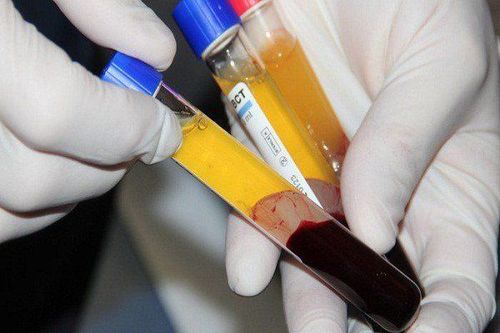
5. Role of BAFF and proliferation ligand (APRIL)
BAFF and proliferation-inducing ligand (APRIL) are cytokines produced by antigen-presenting cells. BAFF and APRIL are important factors for B-cell survival and, therefore, they promote Ig production. Since autoimmune pancreatitis and IgG4-RD are characterized by elevated serum levels of total IgG and IgG4, it is particularly likely that BAFF and APRIL are involved in the immunogenicity of these disorders.
BAFF-producing PDCs have been demonstrated in the pancreas of patients with autoimmune pancreatitis and IgG4-RD. Furthermore, T-cell-independent class-switching recombination of IgG4 Ab requires BAFF production by monocytes. The involvement of B-cell survival factors in the development of autoimmune pancreatitis and IgG4-RD is further supported by the high potential for successful remission by rituximab in IgG4-RD patients. Use of BAFF and APRIL as biomarkers for autoimmune pancreatitis and IgG4-RD, serum concentrations of BAFF and APRIL in patients with these disorders are significantly higher than in healthy controls . In addition, induction of remission by prednisolone markedly reduced serum BAFF concentrations. Therefore, measurements of serum BAFF and APRIL levels can be very useful, not only for diagnosis but also for monitoring disease activity.
6. Role of Interleukin - 6
IL-6 is a multifactorial cytokine involved in autoimmune responses. Although serum concentrations of this cytokine were comparable in chronic pancreatitis patients, autoimmune pancreatitis/IgG4-RD patients, and healthy controls in the study, increased serum IL-6 levels were associated with can help differentiate a specific patient category from autoimmune pancreatitis and IgG4-RD.
Tsukuda et al compared the clinical manifestations of patients with autoimmune pancreatitis and IgG4-RD in relation to serum IL-6 levels. They found that hepatosplenomegaly and biliary involvement tended to be more common in patients with higher serum IL-6 levels. We should, however, interpret these data with caution, as hepatosplenomegaly is commonly seen in patients with multicentric Castleman disease, a systemic autoimmune disorder driven by IL-6. Therefore, some patients with autoimmune pancreatitis and IgG4-RD may present with a clinical presentation similar to Castleman disease. Previous studies on innate immune cytokines have opened up a new research landscape that could facilitate the identification of novel biomarkers in autoimmune pancreatitis and IgG4-RD. In particular, serum levels of IFN-α and IL-33, which faithfully reflect disease activity, can be informative diagnostic tests in autoimmune pancreatitis and IgG4-RD.
Please dial HOTLINE for more information or register for an appointment HERE. Download MyVinmec app to make appointments faster and to manage your bookings easily.
References: Hara A, Watanabe T, Minaga K, Yoshikawa T, Kamata K, Kudo M. Biomarkers in autoimmune pancreatitis and immunoglobulin G4-related disease. World J Gastroenterol 2021; 27(19): 2257-2269 [DOI: 10.3748/wjg.v27.i19.2257]
Kamisawa T , Chari ST, Lerch MM, Kim MH, Gress TM, Shimosegawa T. Recent advances in autoimmune pancreatitis : type 1 and type 2. Intestines . Year 2013; 62 : 1373-1380. [ PubMed ] [ DOI ] [ Citation in this article: 1 ] [ Citation in CrossRef: 116]
Kamisawa T , Zen Y, Pillai S, Stone JH. Diseases associated with IgG4. Lance . Year 2015; 385 : 1460-1471. [ PubMed ] [ DOI ] [ Citation in this article: 12 ] [ Citation in CrossRef: 593 ]





